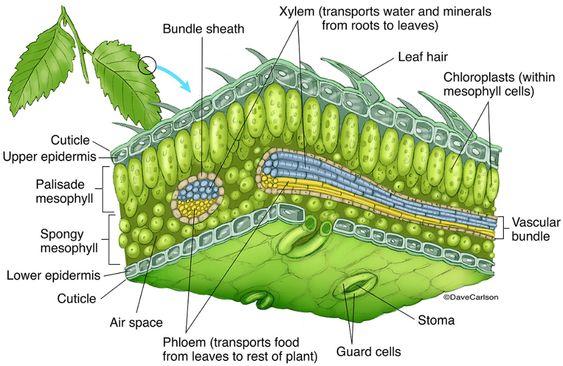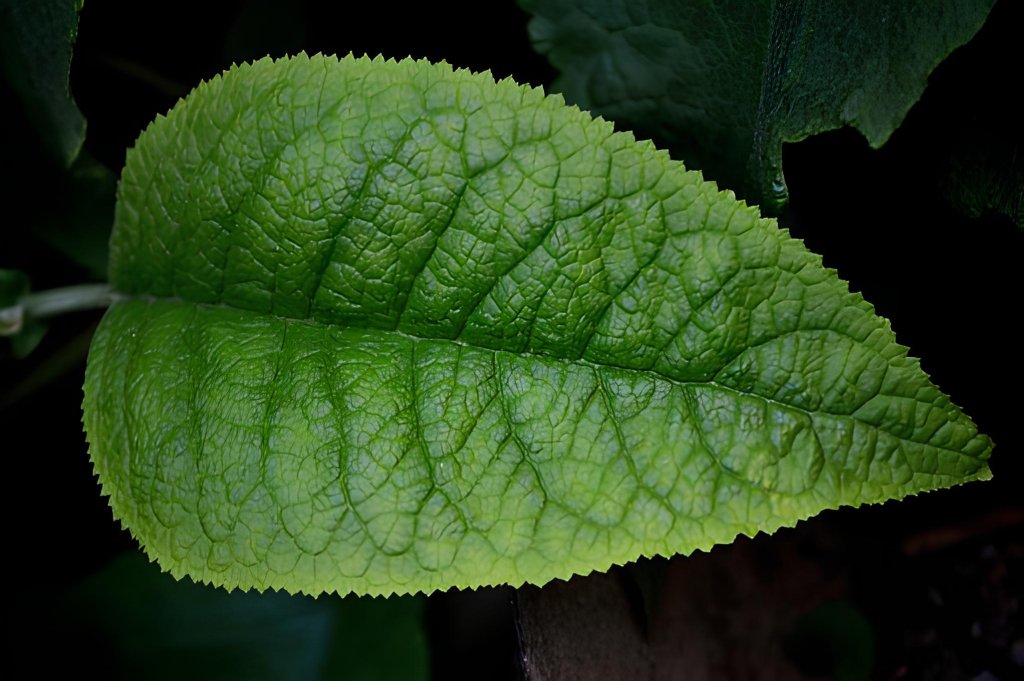Leaves are one of the most exciting parts of nature because they come in many different shapes, sizes, and colors. But besides their beauty, have you ever thought about what leaves are made of?
In this article, we have detailed how leaves are made and learned about the fascinating world of plant anatomy. By learning how leaves are made, we can better understand these essential parts of plants and learn more about their important role in the Earth’s ecosystem.
Join us on this educational journey into the heart of leaf anatomy and composition to learn the chemistry behind the colors of different types of tree leaves and the essential parts that make it possible for them to do their jobs.
Leaf Structure

To understand what leaves are made of, it is essential to break down their layers and parts, which shows the fantastic complexity of nature’s creation.
1. Cuticle
The top layer of a leaf is called the cuticle. It protects the leaf from things like too much sunlight and water loss. The cuticle is a waxy, transparent layer that keeps water from evaporating and the leaf healthy and valuable.
2. Epidermis
The leaf’s structure is held up by the epidermis, which is right under the protected cuticle. This thin layer has stomata, which are very important. These tiny holes let gases move in and out, so carbon dioxide can get into the leaf for photosynthesis, and oxygen can get out.
3. Mesophyll
The Mesophyll is the part of a leaf in the middle of the upper and bottom epidermis layers. The magic of photosynthesis happens in this green, chlorophyll-rich area. In the Mesophyll, tiny chloroplast cells take in light and combine to turn carbon dioxide and water into glucose and oxygen, the plant’s primary energy source.
4. Veins
The veins are the leaf’s natural movement system. They run through the mesophyll-like complicated webs. Like our circulatory system, these veins carry water, nutrients, and sugars from photosynthesis to all leaf parts. It ensures that each piece has what it needs to grow and thrive.
Leaves are Made: The Symphony of Nature’s Color Palette
Now that we’ve seen how leaves comprise many layers, let’s learn more about their chemical composition, a symphony of elements and compounds that make up plant life.
1. Water: Water makes up 70-90% of a leaf’s weight and is the most essential part of a leaf’s structure. It is needed for many physiological processes in the leaf, such as photosynthesis and the efficient movement of essential nutrients.
2. Carbohydrates: Carbohydrates, mainly glucose, are stored in leaves and energy banks. Photosynthesis creates these energy stores, which the plant can use immediately or save for later. It helps the plant stay alive through the changing seasons.
3. Cellulose: Cellulose is a complex carbohydrate that gives leaves their shape and makes the strong cell walls of plant cells. This vital part gives the leaf shape and form by giving it rigidity and support, like the scaffolding of a grand building masterpiece.
4. Chlorophyll: Chlorophyll is the green pigment that is the star of photosynthesis. It is found in chloroplasts. It takes in the sun’s energy and turns carbon dioxide and water into glucose and oxygen, giving the plant the power it needs to grow and stay healthy.
5. Nutrients: Leaves also contain essential nutrients like nitrogen, potassium, phosphorus, and many vitamins. These nutrients are like the vital minerals and nutrients that help a living grow and develop. They make sure that the leaves and the plant as a whole are healthy and full of life.
Conclusion
When you learn what leaves are made of, you know about the complicated science and biology that makes them so crucial to life on Earth. They are more than just parts of plants; they are where photosynthesis happens, turning sunlight into the energy that keeps life going on in our world.
So the next time you admire the beauty of a leaf, think about how its chemical makeup shows the genius of Mother Nature’s creation and how each leaf is like a symphony of life.
With this knowledge, we can feel more connected to the natural world and enjoy the complex web of life all around us. Leaves are not just pieces of plant matter; they are the colorful threads that hold our planet’s ecosystems together. They are a reminder of how beautiful and complicated the world we live in is.
Frequently Asked Questions
What Makes Water Such an Essential Part of Leaves?
Seventy to ninety percent of a leaf’s weight comes from water, which is needed for many physiological processes, such as photosynthesis, nutrient movement, and structural support.
Why is It Important for Plants to Store Energy, and How Do They Do It?
Leaves store energy as carbs, mainly glucose, which are made by photosynthesis. These stored carbs give the plant energy right away and serve as a reserve for times when photosynthesis is not as busy, like in the winter.
What Kind of Chemicals Do Leaves Usually Have, and Why are They Important?
Nitrogen, potassium, phosphorus, and other essential nutrients are all found in leaves. These nutrients are necessary for plants to grow and develop because they help with things like cell division, enzyme function, and general health.

